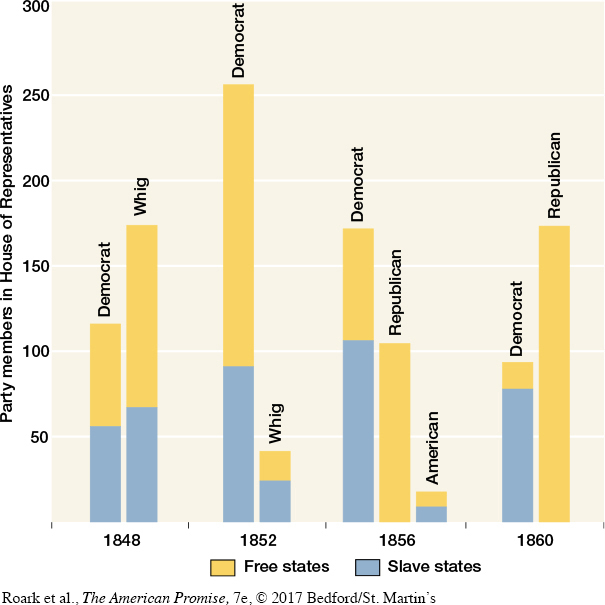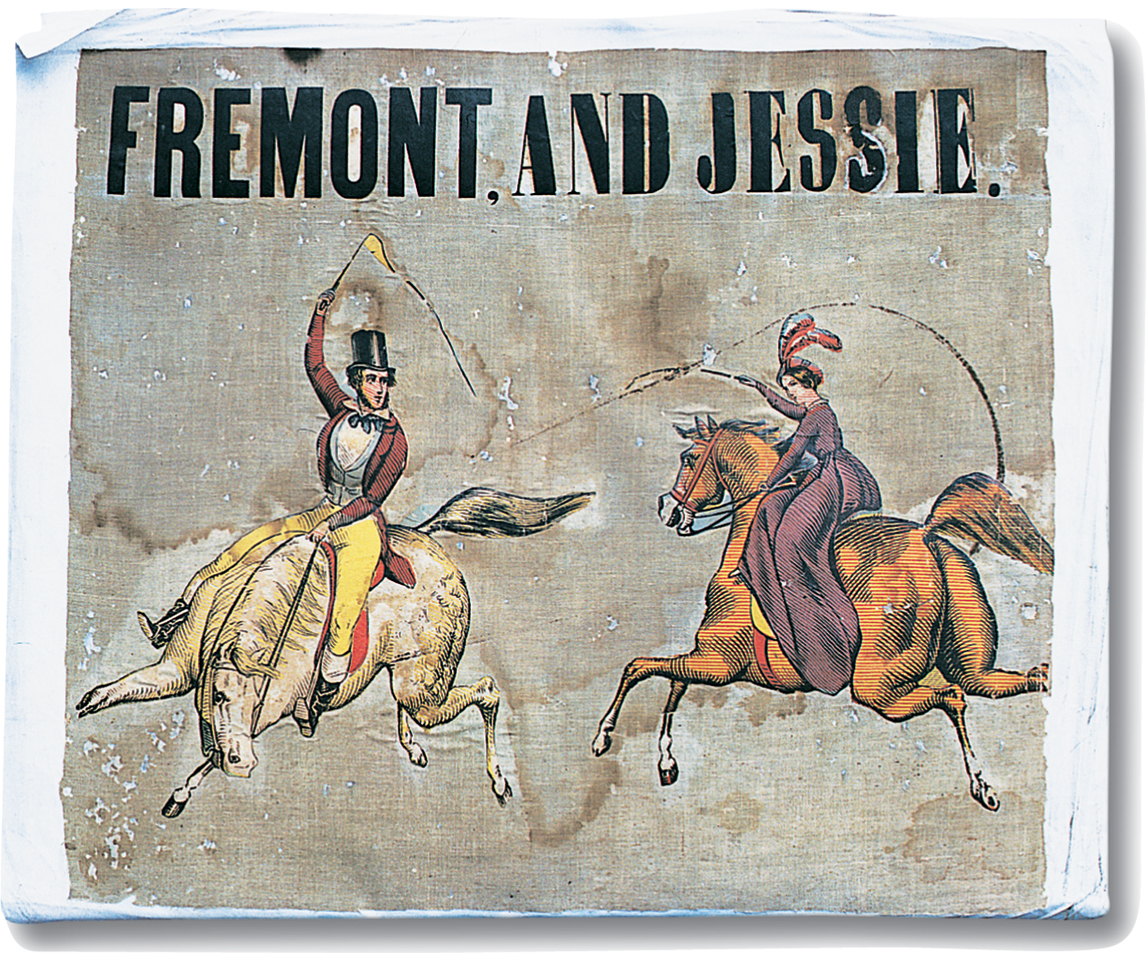Freedom under Siege
Events in Kansas Territory in the mid-

Figure 14.1 Changing Political Landscape, 1848–

VISUAL ACTIVITYJohn and Jessie Frémont Poster The election of 1856 marked the first time a candidate’s wife appeared on campaign items. Jessie Benton Frémont helped plan her husband’s campaign, coauthored his election biography, and drew northern women into political activity as never before. “What a shame that women can’t vote!” declared abolitionist Lydia Maria Child. “We’d carry ‘our Jessie’ into the White House on our shoulders, wouldn’t we.”READING THE IMAGE: According to the poster, who—